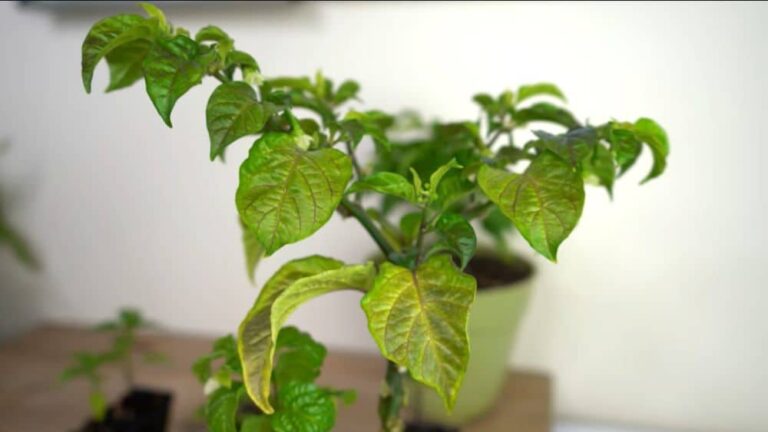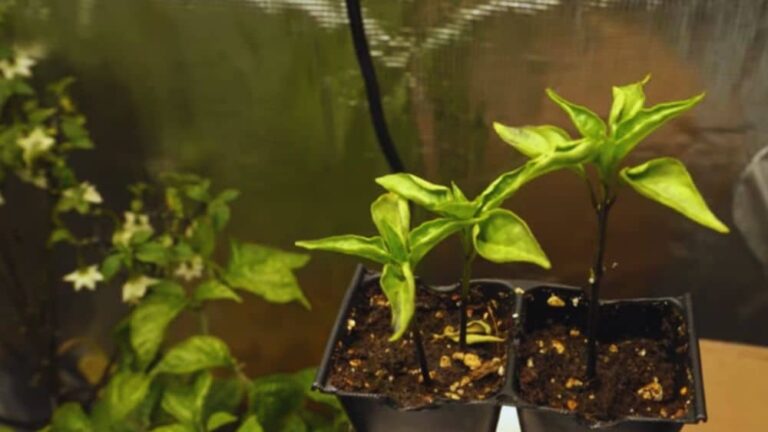
Solving Hydroponic Leaf Problems: An In-Depth Guide
Hydroponics is an innovative way to grow plants without soil that is becoming popular across the US due to its efficiency, environmental friendliness, and space-saving qualities. But hydroponics has problems, just like any farming method. Hydroponic leaf problems pose a significant challenge for growers. To distinguish between a thriving garden and a struggling one, it’s crucial to identify and address these issues promptly. In this guide, we will explore the five most common leaf problems and provide steps to ensure hydroponic plant health and growth.
Why Leaf Health is Critical in Hydroponics
Leaves play a crucial role in plant life. Firstly, they enable plants to convert light into energy during photosynthesis. Secondly, hydroponics is a soilless growing method; leaves absorb surrounding nutrients. Thirdly, poor leaves may hinder plant growth, decreasing quality and yield.
For these reasons, ensuring your hydroponic plant leaves are healthy isn’t just the right thing to do; it is also necessary.
Hydroponic Leaf Problems #1: Yellowing Leaves
Yellow leaves are typical in many hydroponic systems and concern gardeners. This discoloration often indicates a nutritional imbalance, especially a deficiency.
Potential causes:
Nutrient Deficiencies: Much like humans, plants need a balanced nutrients. They rely on hydroponics for nutrient delivery. Inadequate essential nutrients, such as nitrogen, magnesium, or iron, can cause yellowing of leaves.
Inadequate Lighting: Plants need light. If they don’t get the proper range or intensity, they stress them out and turn the leaves yellow.
Solutions:
Adjusting Nutrient Solutions: You should alter your nutrition solution if your plant lacks specific nutrients. Employ a reliable nutrition mix, and think about using a testing kit to maintain the proper balance.
Ensure light spectrum and duration:
- Reevaluate your lighting system.
- Ensure it suits your plant type and covers the necessary light spectrum.
- Adjust when your plants receive light, or consider upgrading to a more efficient lighting system.

Problem #2: Brown or Burnt Leaf Tips
When hydroponic plants turn brown, they are in trouble. These signs, sometimes called “tip burn,” can be frustrating, but they’re usually easy to deal with once you figure out what’s causing them.
Potential causes:
Nutrient Burn: Plants suffer if the solution nutrient concentration is high. It is like taking many vitamins; it may harm you more than help.
Poor Water Quality: Hydroponic systems can be impacted by contaminated water. Additionally, when an excess of dissolved solids or contaminants is present in the water, it can lead to leaf tip browning.
Solutions:
Flushing and Adjusting Nutrient Concentration: If nutrient burn is the problem, use clean water with the right pH level to clean your system. After that, add a milder nutrient solution to the mixture, stirring as directed.
Using Filtered or RO (Reverse Osmosis) Water: You can filter your water or purchase a reverse osmosis device to address water quality issues. It guarantees your plants’ water cleanliness, preventing harm.
Stay Tuned for Further Problems and Solutions: These are just two problems with hydroponic plants. Stay with us as we discuss common problems and give you ways to fix them so your hydroponic garden remains healthy.
Hydroponic Leaf Problems
#3: White or Powdery Spots
Anyone who likes hydroponics loves bright, healthy leaves. But if you’ve seen white or powdery spots on this otherwise gorgeous scenery, that means there are specific hydroponic leaf problems. These spots are often signs of deeper problems that must be fixed immediately.
Causes:
Powdery Mildew: Powdery mildew, a fungal infection, creates small white spots on leaves. This condition mainly occurs in regions with high humidity and limited airflow. Neglecting it can harm the plant’s well-being.
Pests: These white marks are sometimes caused by pests like whiteflies or spider mites. To get sap from plants, they suck it out, leaving pale, powdery spots on the leaves.
Solutions:
Natural Fungicides: To eliminate powdery mildew, follow these two steps. Firstly, modify environmental conditions by lowering humidity and enhancing ventilation. Secondly, prevent fungus spread with natural fungicides such as neem oil or a baking soda solution.
Pest Management Practices: If bugs cause hydroponic leaf problems, bring in ladybugs, which eat whiteflies and spider mites. You can also eliminate these pests with insecticidal soaps or neem oil.
Problem #4: Curling or Clawing Leaves
If your plant’s leaves curl or claw, that’s another scary sign to watch out for. This kind of warping isn’t just an issue of looks; it’s a sign of more profound, systemic problems with hydroponic leaves.
Causes:
Overwatering: Giving your plants too much water is possible in hydroponics. Too much water can suffocate the roots, preventing oxygen from reaching them and resulting in stressed and curled leaves.
Root Rot: Root rot happens when the roots get soft, brown, and smell terrible. It usually happens when plants get too much water. The plant can’t absorb nutrients at this point, which shows in its damaged leaves.
Solutions:
Adjusting Watering Cycles: Adjust your watering frequency and duration to prevent overwatering. Ensure your hydroponic system permits water drainage for proper aeration.
Checking and Improving Root Health: Trim away decaying roots. If your plant has root rot, consider transplanting it into clean soil. Additionally, hydrogen peroxide in the water enhances oxygen levels and eliminates harmful agents causing decomposition.

Hydroponic Leaf Problems
#5: Holes or Torn Leaves
Visualize this: On your hydroponic plant, you notice some leaves sporting Swiss cheese-like holes. This damage indicates hydroponic leaf issues.
Causes:
Physical Damage: Leaves may be torn by accident or rough treatment. However, most holes are signs of bugs.
Pests: Insects like worms, snails, and slugs eat young, tender plants and wreck a hydroponic system.
Solutions:
Protective Measures: Protective measures like garden netting can protect against hungry invaders.
Natural Pest Repellents: Introducing natural repellents like diatomaceous earth can deter pests. Another eco-friendly option is introducing beneficial insects, like praying mantises, that prey on these leaf-eating pests.
If you know about and fix these common hydroponic leaf issues, your hydroponic projects will succeed, and your plants will be healthier and more effective. When you use the above tips along with regular checks, you can keep your hydroponic garden looking beautiful and healthy.
Preventive Measures for Hydroponic Leaf Problems
It can be challenging to figure out all the details of hydroponics, especially when you have problems with your hydroponic plants. Still, protection is often better than cure. Follow these steps to ensure your hydroponic garden succeeds:
Regular Monitoring and Inspections: Do the same for your plants and beloved car. By checking regularly, you can catch minor problems before they get serious.
Proper Maintenance: Make sure you take care of your hydroponic system, whether a deep water culture system or a nutrient film technique system. Clean filters, change water, and inspect for equipment malfunctions.
Balanced Nutrient Solutions: Too much or too sparse of anything is wrong; the same is valid for plant nutrients. Ensure you’re giving your plants a balanced diet. It doesn’t just prevent leaf problems; it also promotes vigorous growth.
Use Disease-Resistant Plant Varieties: Numerous sellers in the US offer plant varieties that are inherently resistant to particular diseases. Consequently, this minor alteration can significantly reduce the likelihood of issues arising with the hydroponic leaves of your plant.
Final Thoughts
Hydroponic leaves have a story to share. Hydroponic leaf problems can provide valuable insights into your plant’s well-being. By promptly addressing and preventing these problems, your garden can flourish as a vibrant and productive oasis.
Remember that even if things go wrong, your plants can still do well with consistent care, regular attention, and love.
A Call to Act
Have you had problems with hydroponic leaves that aren’t covered here? We’d like to hear your stories and ideas. Feel free to leave a comment below or join our discussion board. Read our related posts to learn more about hydroponics and find products that help your plants grow.
FAQs on Hydroponic Leaf Problems
Why are my hydroponic plant leaves yellow at the edges?
Yellowing, especially around the edges, is often a sign of nutritional imbalance, especially a lack of potassium. Recheck your nutrient solution’s balance to ensure it meets your plant’s needs.
Can overlighting cause hydroponic leaf problems?
Of course! Just as plants can get leaf burn from not getting enough light, so can they from too much light. Make sure the lighting fits the needs of your growing plants.
How often should I change the water in my hydroponic system to avoid leaf issues?
Changing the water every two to three weeks is an excellent idea for most systems. But check the water quality and nutrient levels often and make changes to keep hydroponic leaves healthy.
Is tap water safe for my hydroponic system?
In many US regions, tap water contains chlorine and other additives detrimental to plants. Therefore, it’s advisable to opt for filtered or reverse osmosis water. In cases where tap water is unavoidable, allow it to sit for 24 hours to let chlorine evaporate.
Why are tiny white bugs on my hydroponic plant leaves?
You might be dealing with whiteflies or spider mites. Both can cause hydroponic leaf problems. Check your plants for pests often, and if you find any, add natural predators or use insecticidal soap to get rid of them.

Meet Milan Cole, your urban gardening pro!
Milan Cole, chief content writer at Maven Gardening and an urban gardening expert, is passionate about helping city dwellers cultivate their green thumbs. Armed with extensive horticultural knowledge, Milan provides practical advice for overcoming urban gardens’ challenges, like limited space, water scarcity, and reduced sunlight.
His expertise extends beyond traditional methods, encompassing innovative approaches like hydroponic and aquaponic systems and sustainable gardening practices. Milan skillfully adapts these techniques to urban environments, considering factors like pollution and climate change.
In his clear and concise writing, Milan offers actionable solutions for anyone wanting to bring life to an urban space. He shares valuable insights into growing herbs in tight spaces, maximizing the potential of window boxes, and transforming even the most miniature balconies into thriving green oases.
Milan’s guidance is straightforward and practical, making it ideal for anyone looking to cultivate their own urban garden, regardless of prior experience.
Join Milan Cole on your journey to metropolitan Eden!
